Mobile Banking Apps Are Changing The Way We Bank, But That’s Just The Beginning
It has been over 10 years since the launch of the Apple App Store and Google Play Store. Combined, there are almost 5 million apps available to download. Apps are now an integral part of our daily lives. Nearly 70% of our internet browsing is on mobile devices.
Our app development agency has been around just as long as each app marketplace. We’ve been developing custom apps for companies across the USA for over a decade. For any app development projects, the most important question clients ask is “how much does it cost to make an app?”.
App development is now a second nature to us. With experience of launching over 60 mobile apps for iOS and Android, we know the intricacies of app development and how to make successful apps. In this guide, we will cover:
- The stages of app development
- What makes an app successful
- Mistakes to avoid in app development
- How much does it cost to make an app
- App development costs for past Invonto projects
- How to get app cost estimates in minutes
- What to do if you do not have enough budget
Let’s start with the basics first. Think about app development costs like building a house or purchasing a car. In our scenario, your app idea is the “house” or the “car”. Estimating the cost is impossible with little information. The “house” could be a 4 bedroom and 2.5 bathroom house. Or the “house” could be a 6 bedroom and 5 bathroom house with a basement. We need more details to give a proper estimate. For a house, we need to consider the square footage, flooring options, fixtures, and cabinetry. Let us switch gears and talk about cars. Whether you want a Toyota, a Ford, a Tesla, or a Ferrari, the cost changes based on features. The cost of creating an app is no different.
Let’s dive deeper and use the example of a familiar app to illustrate our concept further. Mobile banking apps are one of the most widely used apps available. What goes into making a mobile banking app? Firstly, you need a home banking system. For simplicity, let’s imagine home banking system as a back-end with a database that stores our data. To access this data through a mobile app, you need to build an interface called a Web API. Web API allows the mobile app and the back-end to communicate and transfer data. Speaking of the mobile app, you need that, too! Mobile apps can be custom-built for iOS and Android devices. You may also need a web portal where users can access their information using a desktop or laptop. Obviously, there is more to it. A mobile banking app needs to secure user data and communicate with users through app notifications. Without these two features, your banking app is useless. Hopefully this example helps you understand how involved mobile app development can become when you break it down.
App development cost of today’s most popular apps
App development isn’t rocket science. Still, we can agree that an experienced team and a systematic process are necessary to create apps. There is this false idea that mobile applications are built in a week and cost under $5000. The gig economy and news coverage on overnight success stories continue to promote the myth that successful mobile apps are inexpensive and easy to build. None of this is a reality. There is more that goes into developing a standout mobile app than meets the eye. An examination of the most popular apps of 2021 will help us understand the cost of app development.
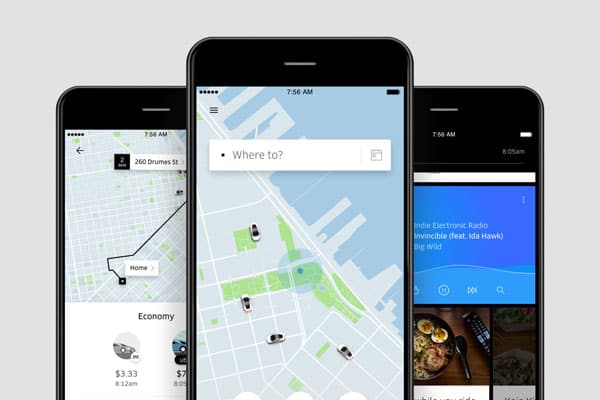
Uber
Travis Kalanick and Garrett Camp founded Uber in 2009. Both entrepreneurs were familiar with success having sold startups they co-funded for large sums. The idea for Uber started as a timeshare limo service. It evolved into a ridesharing service and became the highest valued private startup in the world. The Uber app has a user base of 110 million. The Uber app pilot program was developed with a seed funding of $200,000 and tested in New York City and San Francisco. It cost about $200,000 to build. Soon after the pilot, the company raised $1.25 million for further development. Since then, it has invested billions in the platform, customer support, and advertising. In 2021, Uber is worth almost $100 billion. Up from its $60 billion valuation in 2020.
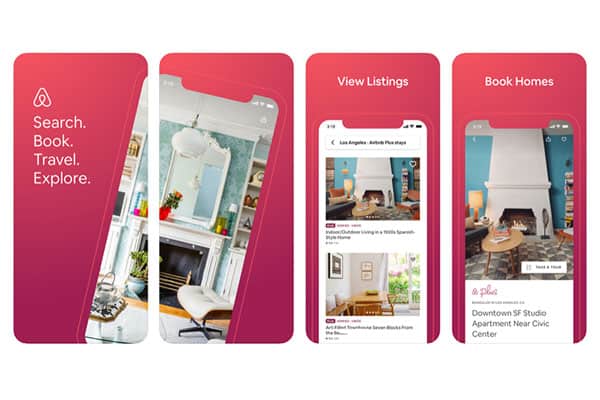
Airbnb
Airbnb was founded by Brian Chesky, Joe Gebbia, and Nathan Blecharczyk in San Francisco during 2008. Two of the founders were having trouble paying rent. They rented out their apartment to strangers attending a local conference. This sparked the basis for Airbnb to challenge our idea of travel. Since the 2014 rebrand, Airbnb has continued to grow and expand its service offerings. In 2021, Airbnb is worth over $110 billion.
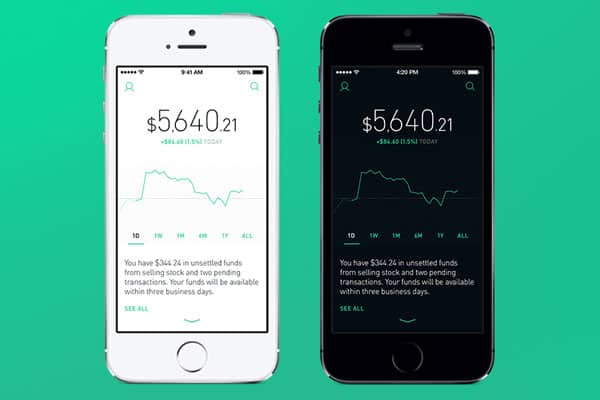
Robinhood Investment App Screens
Robinhood
Robinhood is an American app-based stock brokerage that offers commission-free trading. It allowed customers to buy and sell stocks without paying commission. The Robinhood Android app went live in 2015 with a $3 million investment. By the end of 2018, Robinhood had a user base of 6 million. Back in 2019, Robinhood was valued at $7 billion. Fast forward to 2021 and its now valued at $20 billion. Wow!

Tiktok
Before TikTok, there was Musical.ly. Musical.ly was a popular video sharing app focused on lip-syncing. The Chinese tech company, ByteDance, purchased Musical.ly in 2008. ByteDance merged it with its own lip-syncing app, Douyin. The end result was TikTok. The new platform quickly rose in global popularity. As of November 2019, it earned more than 1.5 billion downloads. The video-sharing app is now valued at $250 billion.
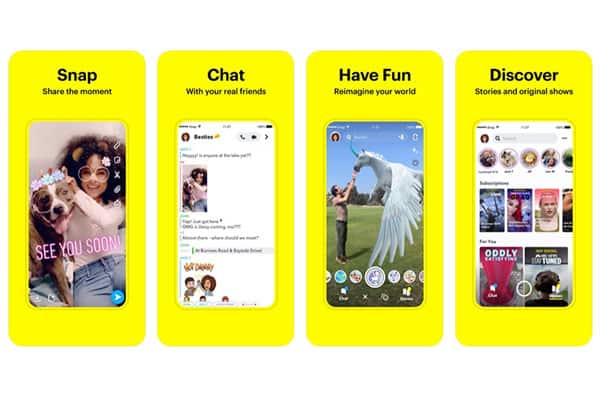
Snap
The original Snapchat app started in a Stanford dorm room in 2011. You can still read Snapchat CEO and co-founder Evan Spiegel’s first post a few months after they launched on the App Store. Evan’s photo-sharing app quickly grew in popularity. Mark Zuckerberg even tried to purchase it in 2013 for $3 billion. Snapchat introduced several new features like Bitmojis, Memories, and AR lenses. The app now has over 210 million daily active users. Snapchat later rebranded as Snap. Snap is now worth $90 billion in 2021, up $72 bilion from its 2018 valuation.
The history of each app reveals some interesting themes that led to their success. Each mobile app began by filling a need. The founders of each company built a mobile app that solved a problem. Each mobile app received proper investment early in their history. Without investment, these businesses would not have the opportunity to grow. Additionally, each company continued to invest in improving the user experience through new features and better performance.
You have a better understanding of what a successful app looks like. Don’t expect version 1.0 to be a huge hit. It takes work and time to be as successful as any of the apps mentioned earlier. Now, let’s breakdown the different stages of the app development process to understand what goes in creating apps.
The four stages of creating a successful app
Creating a successful app starts with a great idea and a sound investment. However, there is so much more to it. Having a great idea, but executing poorly will lead to the failure of your mobile app. To be successful you need to follow a systematic approach to app development. Here are crucial stages to developing your big idea.
Mobile Strategy
Before you write one line of code, you need a mobile strategy. Building a mobile app without a strategy is like building a house without a blueprint. A mobile strategy starts with conceptualizing your app idea. You achieve this by identifying your business needs. You may try to create a new segment, establish yourself in an existing market, or solve a business problem. The goal is to understand the company’s objectives and how the app will align with them. Once you identify the problem, you will need to do competitive research. Ever hear the expression, “There is an app for that”? Well, it’s true. It is important to weigh your need with what already exists in the marketplace. Does an app that solves your problem already exist? If so, is it properly solving that problem? How can you improve upon their app to deliver a better solution?
Once you’ve identified an opportunity, you’ll need to establish strategic goals. During this step you should be prioritizing each goal according to the immediateness of the need. Plan short and long-term goals together to move the needle forward. In addition to your strategic goals, you’ll want to consider technical goals. The difference between success and failure is in how you execute your idea. Choosing the right mobile experience is crucial. You will want to explore whether you should build a native or hybrid app. You also have an option of developing a mobile web app. You can access them via mobile browser instead of downloading app from an app store. Ultimately, you’ll want to find the best fit by comparing each option against your objectives.
After you choose a platform, you will need to decide on how to approach continuous delivery. Just because your app launched on the app store doesn’t mean the job is done. Consumers have evolving needs. Both Android and Apple constantly improve their mobile devices and OS. Lasting success comes with a long-term plan. You must address bugs, feature requests, and performance improvements.
Finally, you’ll want to protect your mobile app and user data. A security strategy and governance policy will safeguard your investment. There is plenty more to learn about developing a mobile strategy. In our post, how to develop a successful enterprise mobility strategy, we dive into building a mobile strategy in great detail.
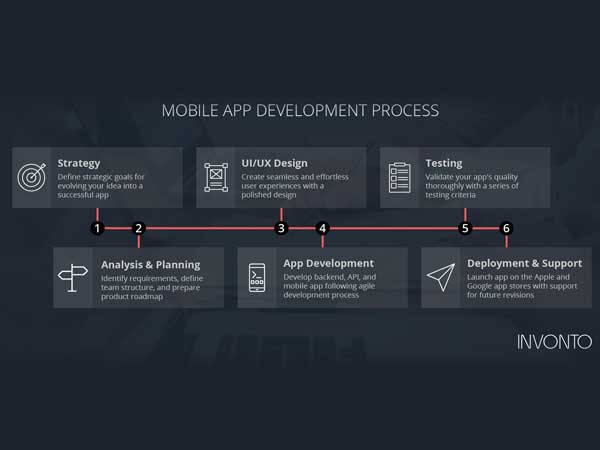
App Development
You now have a mobile strategy. Time to start app development. All successful apps share a few qualities. Successful apps care about design. They follow industry best practices delivering a user experience that engages consumers.
Design, performance, and security are crucial factors in app development. Successful apps can scale effortlessly. The app can have a few hundred downloads or several million downloads. Performance should not be affected. Successful apps are also highly secure. The data your app collects becomes a valuable resource. Use data to improve your app, meet consumer needs, provide personalized experiences, and increase revenue. There is also a dark side to data collection. Data can also be stolen or used improperly. If your data is at risk, your audience won’t continue to support you.
UX and UI design will be the next step in your app development process. People use these terms interchangeably, but they address different aspects of your mobile application. UX design refers to user experience design. UI refers to user interface design. UX design encompasses all interactions between the end-user and the app. In contrast, UI design focuses on the presentation of your mobile app. UX and UI complement one another. If either one is lacking, it could negatively affect user engagement. For the mobile app designs, you have to be mindful of the design guidelines for iOS and Android.
Before you start designing, you need to collect the right information. What data will users be able to see on the app? What data will the app collect? How will users interact with the features you plan to develop? Figuring this out usually starts with wireframes. Wireframes are low-fidelity mockups that allow you to organize information quickly. Wireframes usually start as sketches on paper. Other times, designers build wireframes using specialized software like Adobe XD, Invision App, Figma and Sketch. Ultimately, the goal is to rapidly explore what the app could look and how it could function.
Wireframes are followed by high-fidelity mockups. These layouts will look closer to the final product. They will implement a style guide that maintains the design aesthetic. Most companies will develop custom style guides, but pre-existing guides are another option. For example, Google uses a style guide across all their digital products called Material Design. This is open source documentation that anyone can use to design their MVP.
With an approved prototype in place, you can start development. You must select a technology stack, define the technical architecture, and define development milestones. Mobile app development is divided into two parts. The mobile front-end focuses on delivering a seamless experience to the end user. This is the portion of the app the user interacts with. The back-end or server-side, supports functionality using databases and server-side objects. Throughout the app development process, you will want to test app performance. Quality assurance (QA) testing ensures a product that is stable, usable, and secure.
The final step of the mobile app development process is deployment. You must follow specific instructions to publish on the Apple App Store or Google Play Store. We encourage businesses to use mobile analytics platforms to measure app performance. With analytics, user testing and user feedback, you can make more updates to support the app’s growth. Following our mobile app development process will help you create a scalable and profitable app.
App Marketing
How you promote your mobile app can be the deciding factor in whether your app is successful or not. Marketing isn’t optional, it’s mandatory.
Before you launch your app, you want to raise awareness about the app. What good is an app that no one knows about? That is why pre-launch is important. During this stage you build brand awareness and product visibility. Your pre-launch strategy can use the information from your mobile strategy. Define your ideal customer with market research and competitor analysis. User personas can help you understand consumer values, pain points, and interests. Use them to outline your messaging and where you will promote your app.
A website can be a great asset to promote your app. A website gives users more information about the app, sets a release date, and gives a link to download. You can give users a chance to join your email list for future updates. You can generate site traffic through social media, content marketing, paid campaigns, and SEO.
Once you launch the app, you want to focus on an acquisition strategy to earn downloads. Get the app in front of the right audience through paid campaigns and social media. Consumers can download the app to their phone in just a few clicks. Expand reach by partnering with influencers. Influencers can promote your app and build trust with consumers. Expand your reach even further with PR campaigns targeting publications and media outlets. Whatever you decide, your acquisition strategy should help you earn downloads.
Once you earn those downloads, the work is still not finished. Think about how Instagram went from 50 million monthly active users in 2012 to 1 billion in just 6 years. If you compare Instagram in 2012 to 2018, you’ll notice how far it has come. Instagram has refreshed the app design several times, rebranded, added new features, and improved performance. Many business leaders focus on acquisition, but not audience retention. How do you convert new users into brand ambassadors? The best way to retain your audience is through two-way communication. Listen to user feedback and engage your users in a conversation. In-app messages and push notifications help you interact with users. Don’t forget to utilize channels outside of the app ecosystem. Email outreach and social media campaigns are perfect to talk to users. Executing a marketing strategy will maximize user growth and help you reach your business objectives.
App Maintenance
Lastly, business leaders need a plan to maintain their mobile app. Popular apps have a strategy for long-term growth. Mobile app development is an ongoing process. The truth is no matter how perfect the original app is, there is always room for improvement. You must consider user feedback, market demands, new competitors and advancements in technology.
App maintenance plans should include security updates and bug fixes. App maintenance ensures the app is compatible with the latest versions of iOS and Android OS platforms and new devices. App maintenance will include any updates related to app performance. Platforms like Google Firebase help app owners monitor performance metrics. Firebase offers performance monitoring, crash reports, and user analytics.Firebase offers performance monitoring, crash reports, user analytics, and much more. In addition to maintenance updates, you may want to consider enhancing your app with new features that provide improved capabilities to keep your customers more engaged.
5 Mistakes to Avoid in App Development
Now that you understand the app development process, let’s talk about a few things you want to avoid.
“Skipping mobile strategy is like building a house with the blueprint. You do not want to end up having a garage on the second floor and master bedroom in the basement.”
Starting Without A Mobile Strategy
This one is a no brainer. Creating an app without a strategy is like building a house without a blueprint. Not having a strategy could mean the final result might not match your vision and customer expectations. If the app doesn’t gain traction, it could result in rework or production delays. This will cost you significantly more in the long-run.
A lack of project planning and management
Agile is a popular buzzword in the tech industry. Still, many developers ignore the most important part of development: project management. Developers will ignore requirement analysis, project planning, and scope management in the name of agile. The agile manifesto doesn’t suggest developers overlook these crucial steps in app development. Without planning, the whole project turns into a moving target. An understanding of functionality and project scope will be forever elusive. By ignoring these steps, the cost of development goes up. Delivery timelines experience huge delays. The end result is an app in development hell that never sees the light of day.
Choosing The Wrong App Development Team
You want to choose a specific team for your app development needs. Not all app developers are created equal. You have many choices. You can hire a freelance developer. You can hire an agency. Or you can establish your own app development team. Whoever you choose should have strong credentials and proven expertise to qualify for your app development project. We will discuss each of these choices in detail in a little bit.
Taking App Development Shortcuts
The cost of app development can be overwhelming. It’s very easy to take shortcuts to save on time and money. Don’t do it. To reduce labor, some developers use code from a different application. This is common practice among overseas development companies trying to lower their costs and increase margins. But this can be extremely dangerous. If your app shares a codebase with other companies then you don’t own any intellectual property. If the original codebase legally belongs to another company then you could risk being sued. If the codebase is messy or contains errors, it could affect the performance of your app. Not to mention the potential security risks. What if you use code from an application that is several years old? Apps at risk of data breaches could cost you money and, more importantly, trust.
Underfunding your project
This is closely related to the last section. If you do not fund your project adequately then either you are going to end up hiring the cheapest developer on the block or take the hacker approach to the app development by eliminating important steps from the app development process. If you are going try developing your app as cheaply as possible by ignoring quality, security, and performance then, you should find something else to do. Why waste your time and money creating something that you know will not succeed in the market? We understand that businesses want to reduce the risk of investment. However, don’t allow your desire to spend less cloud your judgment. Many developers will make empty promises about developing apps for less just to get their foot in the door. Be wary of those developers.
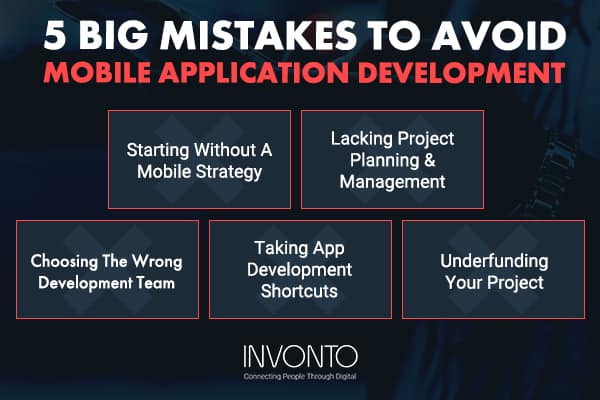
How much does it cost to make an app?
Now that we understand what it takes to create a successful app, we can talk about pricing. How much does it cost to make an app? Well, the cost is influenced by several factors. Let’s break it down.
Mobile App Development Cost Breakdown
Earlier, we outlined the criteria for developing an app. It can be a lengthy process, especially if you want to succeed. We can use this information and our experience to create a time estimate. The average mobile app will need 1200 – 1500 hours of effort. As work for the different stages is staggered, it takes on average 6 – 9 months to complete. This may seem like a lot, but let’s explore this idea. Below we give an example of the minimum estimate of hours needed to complete each phase of the app development process for a Telehealth app.
Business Analysis and Documentation: 80 hours
User Experience Design: 160 hours
Back-end and Database Development: 240 hours
Web API Development: 100 hours
iOS or Android App Development: 480 hours
Mobile User Testing: 240 hours
Project Management: 120 hours
App Deployment: 24 hours
Based on the example, the time needed to create this app is 1344 hours. So how much does an app cost? Let’s check.
App Development Cost By Vendor
The cost, quality, and timeline will vary based on whom you hire. Earlier, we mentioned you have a few options. Let’s take our estimates and use that for comparing costs for each option.
Freelancers
You can hire freelance developers on platforms like Upwork, Freelancer.com, and Toptal. Toptal claims to have the top 3% of freelance talent. The average hourly rate of a freelancer on Toptal is $80 per hour. If we take our estimated total development time, this will land us at $107,520. This might be what you were looking for, but let’s think this over.
Hiring a freelancer presents a few key issues. First is skill limitation. You may find a good iOS app developer to work on your app idea. However, that iOS app developer isn’t going to be very useful coming up with a mobility strategy, back-end development, web API development, or user experience design for your app. Mobile app development is a multi-tiered process that requires different expertise. Hiring a freelancer is fine if you need expertise for just one discipline. If your needs exceed that, a freelancer may not be the best option.
Even if the freelancer provides expertise you need, time becomes an issue. What takes a team a few weeks may take one developer several months. What if a freelancer gets sick for a few days? Everything stops. You risk releasing your app late, allowing competitors to swoop in. When you rely on one person, you are at the mercy of their availability.
You could hire multiple freelancers. However, you risk spending more time managing these resources working from different locations and potentially timezones. Managing a team that is spread out will become extremely challenging and time consuming. You may exceed project time and budget. This could exponentially increase your overhead.
The list of issues goes on. If you are serious about app development, we suggest you don’t hire a freelancer.
App Development Agency
Hiring an app development agency resolves issues you encounter with freelancers. The team will have specialists who dedicate their time to a portion of the app development process. This will help build your app faster and with quality. The average hourly rate for an app development agency is $125 per hour. That puts cost estimates for our telehealth app example at $168,000.
Most app development agencies will fully manage your project. This gives you more time to focus on other aspects of your business. If you outsource the project to an app development agency, make sure they can assist with app maintenance and enhancements.
When hiring a development agency, you may want to consider the pre-launch and post-launch strategies. The agency can build the app, but can’t develop your overall business strategy and guide you in raising capital. You will need to rely on another company for that. This isn’t a deal breaker for most apps, but something to keep in mind.
Big Consulting Firm
If you need your development partner to assist with your business strategy then you may want to hire a consulting firm. Consulting firms are a good fit if you have compliance needs. They provide a cushion in case of any disastrous situation. The average hourly rate for a big consulting firm is $225 per hour. Our estimate balloons to a total of $302,400.
The sticker shock is real. However, the big consulting firm will have a team of specialists with domain expertise which can be a great fit for the larger projects. Development teams at big consulting firms can be large, spanning 50 – 100 members across multiple locations. The team can be responsible for all development, launch, promotion, support, training, and maintenance. Consulting firms can offer all of the expertise to keep you worry-free about your technology needs, as long as you are able to manage the costs.
In-House Developers
Perhaps you want to find out how much it will cost to make an app by yourself. That could mean hiring an in-house development team. Why outsource development when I can build with my own team? In-house developers can be a great choice in certain situations. You can hire exactly what you need. The cost of development will adhere to the number of salaried employees on staff. Average salary for user experience designers, app developers, and product managers range from $80,000 to $150,000. Salaries can increase if you are hiring in locations with higher cost of living such as New York City, Boston, Seattle, or San Francisco.
The main downside of in-house development is scale. The process of building a team can be time-consuming. Sourcing each employee is a multi-week process that will set you behind schedule very quickly. If you live in a region that has a small talent pool, hiring the best talent is near impossible. You will need to hire remote workers for certain skills. Having geographically dispersed teams can have their own drawbacks over a co-located team.
In-house developers can be an overwhelming responsibility. You may decide to hire developers to build for iOS only. Later on, you decide to build for Android. You’ll need to conduct another round of recruitment to hire new developers. You will have to worry about logistics and paid benefits for each new hire.
Hiring in-house developers can also add fixed costs to your payroll. A single mobile app may not need a full-time dedicated team long term. Instead, outsourcing to an app development agency or a big consulting firm can reduce your fixed costs. Outsourcing your app development can prove to be more flexible, less costly and allow you to scale.
“If you are building your first mobile app or if you are not going to build several mobile apps than hiring an app development agency can be your best option.”
What About Invonto?
You might be wondering where Invonto falls in these categories. Invonto is an app development agency with over ten years of experience and 100% USA based team. We build mobile applications for iOS and Android, from strategy through launch. Over the last decade, Invonto has built enterprise and consumer applications for small and large US companies. Many of our clients rely on us to provide full development services or hire us as an extension of their team. Invonto has been successful in delivering apps within time and budget.
Invonto also has over a decade of expertise in developing web applications, enterprise cloud applications, Internet of Things (IoT) solutions, augmented reality, virtual reality, and applications for artificial intelligence (AI). Most of the mobile app development projects require back-end and web programming. Modern mobile apps also try to take advantage of augmented reality, IoT, and AI. Invonto’s range of services and proven capabilities can make Invonto an ideal app development partner for you.
Invonto has several strong customer reviews on our website. We have several case studies that outline our process, client expectations, and success metrics. Our case studies include work we’ve done with startups like SudokuPDQ and global corporations like Sealed Air and Transamerica.
In our experience, the average cost to develop an app ranges from $150,000 – $200,000. We provide clients with a comprehensive project assessment and end-to-end development services. Below is a breakdown on a few of the apps we have built in our history.
SudokuPDQ App
Description: A complex casino-style gaming application for an entertainment company. Developed for iPad and Android tablets along with a custom gaming platform.
Cost: $400,000
Time: One Year
America’s Got Talent Voting App
Description: Managing shows and performances through a mobile-friendly web admin portal. Supporting multiple versions of iPhone and Android phones.
Cost: $100,000
Time: 4 months
Insite Link App
Description: iPhone app for a supply chain business used to scan QR codes and barcodes to display packaging project details.
Cost: $45,000
Time: 2 months
Investment Management App
Description: An iOS and Android app for a financial business used to manage funds in various investment accounts, forecast growth, and receive financial advice.
Cost: $165,000
Time: 9 months
App Development Cost By Type
In app development, you have three main choices. You can build a mobile web app, a native mobile app or a cross-platform mobile app. You also have to decide on a mobile platform, if you want to build for iOS, Android, or both. What you choose will influence cost.
Native App Development Cost
Native apps are mobile apps built for a specific mobile platform using a native mobile SDK. Native apps are the most common type of mobile app. Because they are built using the native SDK, they offer the best user experience and app performance. Native apps have full access to all device features and are more interactive than web or hybrid apps. The downside is that native apps can be more expensive. If you want your app on iOS and Android, you will need to build two apps. Native apps also have more restrictions because they need to adhere to each respective operating system.
iOS App Development
While Android has an open source framework, iOS is closed. iOS only works on Apple devices. iOS is more restrictive. However, it supports a consistent experience across devices and offers better security. Apple provides several tools for developers like the iOS SDK, XCode, and Testflight. For native iOS app development developers can use Objective-C or Swift. The greatest disadvantages for iOS app development are less customization and a more restrictive development environment. Native iOS apps cost about the same as native Android apps but native iOS apps cost less to support and maintain.
Android App Development
For native Android app development mobile developers use C++, Kotlin, and Java. Google provides development tools like Firebase, Jetpack, and the Android SDK. Android apps benefit from Android’s open source framework which is less restrictive than iOS. While it takes several days to over a week for getting an iOS app approved for Apple app store, it takes a few hours to get Android app approved for Google Play. The disadvantage of Android app development is the fragmentation of its software ecosystem. Android’s open source framework means different device manufacturers can develop their own Android apps. With less restrictions, more versions of Android are actively being used. Building and updating apps can be time-consuming, costlier than iOS app development, and cause more headaches. On average, Android apps cost 25% more than developing iOS applications due to additional time it takes in developing and testing apps for different Android based devices.
Cross-platform App Development
Cross-platforms apps are mobile apps that are built using 3rd party mobile frameworks such as Xamarin, Appcelerator, and PhoneGap. Cross-platform mobile apps are compatible with multiple mobile operating systems. If you plan on releasing your app on iOS and Android, cross platform app development could be an option. Compared with native app development where you have to build two apps, with cross-platform mobile app you can build a single app and use on both mobile platforms. You are still required to maintain development environments for both iOS and Android for finalizing your app’s build environment for testing and release in the app store. It is also a bit tedious to develop apps using a cross-platform mobile framework than the native SDKs. And you are still required to test apps on both iOS and Android devices. Due to that instead of cross-platform apps costing you 50% less than native apps, it ends up saving you at the most 15-20% The challenges with the cross-platform mobile apps are that lack of performance and user experience compared with the native apps. Also, when a new version of mobile OS is released, it takes on average six months before the cross-platform mobile frameworks are updated. This will cause delays in keeping your mobile apps updated. In our experience, cross-platform mobile apps are not recommended due to its limitations and negligible cost-savings.
Web App Development Cost
Web apps are websites that can run across all device types including desktops, tablets, and smartphones. Web apps can run on any mobile browser such as Safari and Chrome. You do not have to build separate apps for the desktop, iOS, and Android. This reduces the cost of initial app development and ongoing maintenance by almost 35% compared with native app development. Web apps can be slower than native mobile apps and cannot access full device features. This might impact the user experience. Without an app store, it can be difficult to discover your app and will require additional marketing efforts. Many companies will choose to build a web app if they have a limited budget. Web apps are also preferred when there is no benefit to developing native mobile interfaces.
What can you do if you do not have enough budget?
You don’t have to give up on your idea if you do not have a budget to create your app. You still have a few options.
Start with wireframes
Creating wireframes is an essential to develop your app. Wireframes turn app requirements into a visual storyboard. You can create wireframes for as little as $10,000. Wireframes demonstrate the potential of your idea to investors. This can greatly improve your chances of receiving investments for your project.
Learn More: How to Raise Startup Capital With Confidence
Create a proof of concept (PoC)
A proof of concept is a version of your app that includes only core functionality. PoC allows you to test your app with a focus group as a pilot project. PoC can be created with as little as 20% of your app’s cost estimates. PoCs will help you validate and refine your idea before heavy investments. Validated PoC can increase your chances of receiving VC investment for your business. PoC is used by both startups and enterprises. It minimizes risk and there is no need to fully commit to an expensive project. This is especially important when building prototypes for emerging technology. PoC is perfect for validating ideas in augmented reality, virtual reality, IoT, and AI.
Learn More: Invonto offers R&D services for emerging technologies
Build a Minimum Viable Product (MVP)
When you are on a limited budget, you need to evaluate your “wants” vs your “needs”. It is easy to get carried away with all the bells and whistles of app development. An MVP is designed to restrict the scope of work. By focusing on key functionalities, you reduce the financial investment and delivery timeline. In our experience, an MVP could cost as little as 50% of the total app development cost.
Conclusion
App development is serious business. A successful app could launch the next unicorn or elevate your digital transformation strategy. It might seem like a daunting task, but you have support. An experienced development team can help you deliver your app idea successfully, on time, and within budget.
Do you have any questions about app development? Do you want to speak with our experienced team and jumpstart your app development? If so, contact us today to schedule your free consultation.



